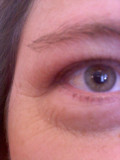Bad Boys, Bad Boys - Redneck Tale # 15
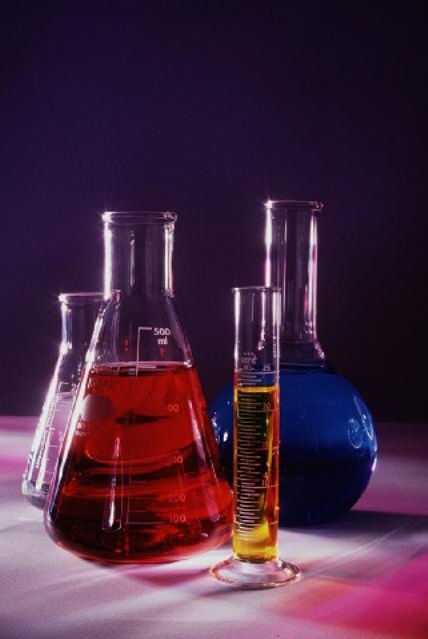
Professor Dr. Carleton Spears
Johnny was a chemist.
Johnny is no more.
What Johnny thought was H2O -
Was H2SO4.
That was a little ditty we used to recite back in chemistry class. Dr. Carleton Spears, a nice PhD-type, was always attempting to put some smarts into the thick skulls of us 16-year-olds, but it was pretty much a hopeless effort on his part.
Actually, we did not burn the school down or explode stuff in class. There was a good reason for our exemplary conduct in that regard. Dr. Spears kept the flammables and explosive stuff locked up, with the keys always in his own pocket.
Well, he did mess up once or twice, but those lapses were not entirely his fault.
He had a favorite student – a kid with big ears and bushy hair as I recall. His name was Randolph Something-or-Other (I forget his last name), and he was big for his age. He had a habit of toadying up to the good professor, and there turned out to be a certain reciprocation ‘twixt the two of them. Ergo, Randolph was selected to put a demonstration experiment together for the enlightenment of the class dummies; that is, the rest of us.
Under typical Dr. Spears type supervision, Randolph filled a whole big bunch of clear glass flasks with chemical solutions, each solution being of a slightly different color. Some were green, some blue, some pink, some yellow, and so on. Once filled, the flasks were placed in a neat row on the high shelf which spanned almost the whole wall close by the door to the classroom. Some weeks went by with all of the flasks sitting obediently on that high shelf.
Then one day, as we were all partaking of knowledge passed along to us by Dr. Spears, someone came through the classroom door and closed the door rather vigorously. One might say, he slammed it really hard.
Starting with the flask shelved nearest the slammed door, each flask exploded, one by one, much like a row of dominoes that do a tumble once the first of them is pushed over. We all clapped and cheered. What did we know? Obviously the experiment had been designed for our entertainment. Dust, little pieces of flask, and multi-colored watery stuff went everywhere. Randolph, too, he took off running. It was a beautiful thing, let me tell you.
Dr. Spears made a little lecture of the whole deal, trying to bring his attentive students back down to earth somewhat. "Nitrates," he told us, "tend toward instability after they sit around for a time and the solutions in which they reside become more and more concentrated."
Let it be said that Dr. Professor Carleton Spears was truly a great teacher. That was a bang-up lesson he taught us knuckleheads in 1948, which, if my math instructor taught me anything at all, that makes the date of his lesson about 50 –no, 59- doggone it, 61 whole years ago.
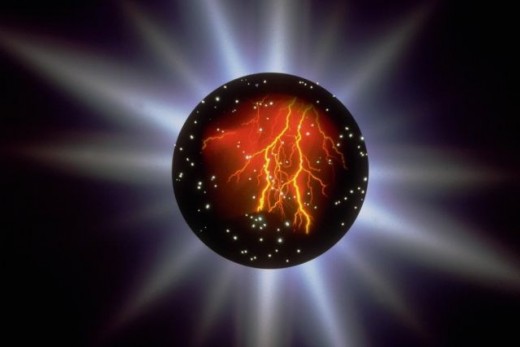
Professor Dr. Raymond Hussey
So, enough of chemistry. We can now go back one year to 1947 and visit with Dr. Raymond Hussey. Dr. Hussey had the honor of trying to teach us kids some physics. He was good at his trade such that the fact we were incorrigibles did not seem to slow him down very much. The guy was always smiling with some inner thinking going on. His mind was likely on one or more of the nifty gadgets he kept in his classroom and his big physics laboratory. He knew all about them. To us, those gadgets were mostly very weird.
One day he placed a large thing atop his lecture bench. It featured a cylinder that measured about two to three feet in length and probably a foot in diameter. On each side of the cylinder a metal shaft stood vertically, and on top of each shaft was a horizontal metal shaft on the end of which was a brass globe of maybe eight or nine inches across.
On the wooden board that held this thing together there was a small wooden box. It turned out that the little box contained an electrical transformer and a small knob. There was an electric cord coming out of the box with a plug at its end that would fit into a wall socket.
Then Dr. Hussey plugged that thing into the wall. He rotated those two horizontal shafts to move the large brass globes closer and closer together until they were about a foot or so apart. Then he fiddled with that little knob inside of the small box.
All of a sudden – lightning. Zap,zap,zap, Snappity, snap, snap. Those two globes were right there in the middle of it all. It was fascinating, at least until Dr. Hussey pulled the electric plug out of the wall socket.
He explained things to us, most all of which we unexplainably understood. The "thing" was a "Tesla coil," that he and some earlier students had constructed of a big cardboard cylinder and many, many feet of thin, insulated wire. To the coil was connected a "step-up" electrical transformer that brought the regular 110-volt electrical voltage from the wall up to about 5,000 volts of voltage that was used to push electricity to his giant Tesla coil. The knob deal was connected to what had been a Ford Model T "spark gap" contrivance. By turning the knob this way and that way, the alternating frequency of the electrical current could be changed to some optimum value to make the Tesla coil work better and better.
As Dr. Hussey cautioned, he could not extend his demonstration of manufactured lightning for too long a time because radio waves were also created and, if conditions were right, or if the lightning was used to zap an antenna, radio reception would be harmed or destroyed even for some distance around.
Then Dr. Hussey made a mistake. He told us that he had to attend a meeting of teachers and would be gone for about 30 minutes – and would we all kindly use that time to review one of the chapters in our texts telling us all about alternating current electricity. Then he left to attend his meeting.
About the time we saw Dr. Hussey’s heels clearing the doorway, we picked up that big Tesla coil thing and carried it over to the window where Dr. Hussey had strung a braided copper wire antenna – the one he used to show us how a crystal radio set would work using only the energy coming in from radio waves captured by the copper wire.
Our big Tesla deal was quickly plugged in. One of the kids fiddled with the little knob while another pair of troops positioned those brass globes on either side of the antenna wire.
Zap, zap, zap went the lightning. We kept that up for about the next 15 minutes.
By the time Dr. Hussey returned to the classroom, we were all deep into our text study of alternating current, just like the studious and obedient students we most certainly were.
We learned from the next day’s local newspaper that we had knocked out radio reception throughout our city the day before. There was talk of federal law enforcement being visited on those responsible. Ask me if any of us were scared, or were we scared just plain bigtime?
What is truly remarkable is that Dr. Hussey never did figure out that this great event came straight out of his classroom and by virtue of his masterful instruction.
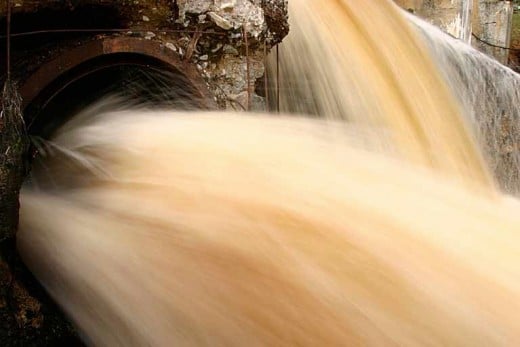
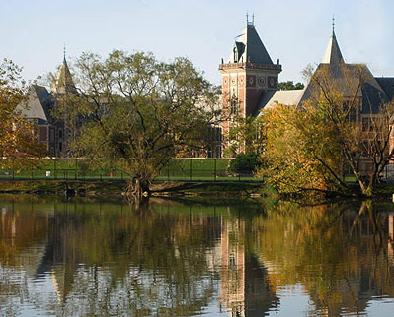
Professor Dr. William Shoop
We are still regressing in point of time. This, then, was 1946. Dr. Shoop was well known in the community as being the finest biology and general science teacher ever to walk on the sidewalks of the city. Parents used to tell their kids to be nice to Dr. Shoop, to be polite, quiet, and attentive in class, and to study Dr. Shoop’s lessons really hard so that he would want to remain at the school and never leave. Now, is that some sort of reputation, or what?
Dr. Shoop was short on lecturing and long on project assigning. His big thing was Mother Nature, her ways and the manifestations of her typical perfection, no matter how bad they looked to the casual eye.
Several of us were assigned to investigate "river and stream flow," and we jumped on that right away. Our school had two lakes in front of it, big ones. We understood that the water in those two lakes had to come from somewhere, and, because the water was always clear and without stink, it had to go to somewhere else. It was up to us to figure out those things – the from where and the to where. Actually, we believed that our study was made a whole lot easier by virtue of an 8-foot-diameter tile pipe, call it a conduit if you like, that led away from the southernmost of the two lakes. What could be easier than to simply follow the pipe?
Problem. The pipe disappeared into the ground less than ten feet away from the lake. That posed a problem for us investigators of the age of 14 whose brains had mostly thought about food and little kid baseball up until then.
Then we remembered seeing the top part of a huge ceramic tile pipe that surfaced in some woods close to where we lived. That must be the one, thought we.
The pipe was pointed toward where the ocean met the shore; the exact place of our frequent summertime swimming and boating jaunts. Surely, that was where the water from the lakes was being poured, for it had never been known to be running down any of the streets in our city.
We put our reasonably empty heads together and decided that we could put a floating piece of wood through one of the entry holes atop that ceramic tile pipe. The wood would go along with the water and would exit the pipe where it hit the shore. In went a nice size hunk of wood. We all jumped onto our bicycles and raced to the oceanfront.
No hunk of wood!
Back we went. In went more wood – lots and lots of it. Then onto the bicycles and down to the shore again, and again, and again. No wood emerged.
Our report to Dr. Shoop was that we never quite figured out where the lake water wound up, but that the big pipe certainly told us that it was probably into the ocean. We even pointed out that the moisture from the ocean went up as clouds, fell as rain north of our lakes, and the whole deal went around and around as Mother Nature intended for it.
Right after that my father was reading the local newspaper when he gave a disgusted grunt about something he had just read. I asked him what caused him to become angry.
He told me that someone had cost the city $19,000 (probably a quarter of a million dollars today) in repair bills of the ceramic conduit leading from the "Twin Lakes" to the ocean. It seems that the exit grate situated at the end or the conduit to keep people from going into that 8-foot diameter pipe had become clogged with all sorts of wood, branches, old mattresses, and whatever else, such that the pressure on the ceramic pipe caused it to rupture.
I was about to discuss our water flow project with my father, but that seemed to be something that could probably wait.
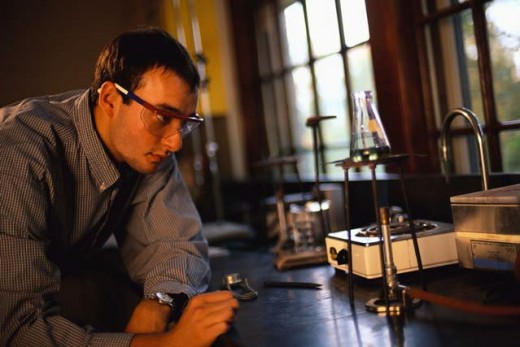
Summarizing
When you ask your kid, "What are you doing?" and the answer is "Not much," it is time to get worried.








